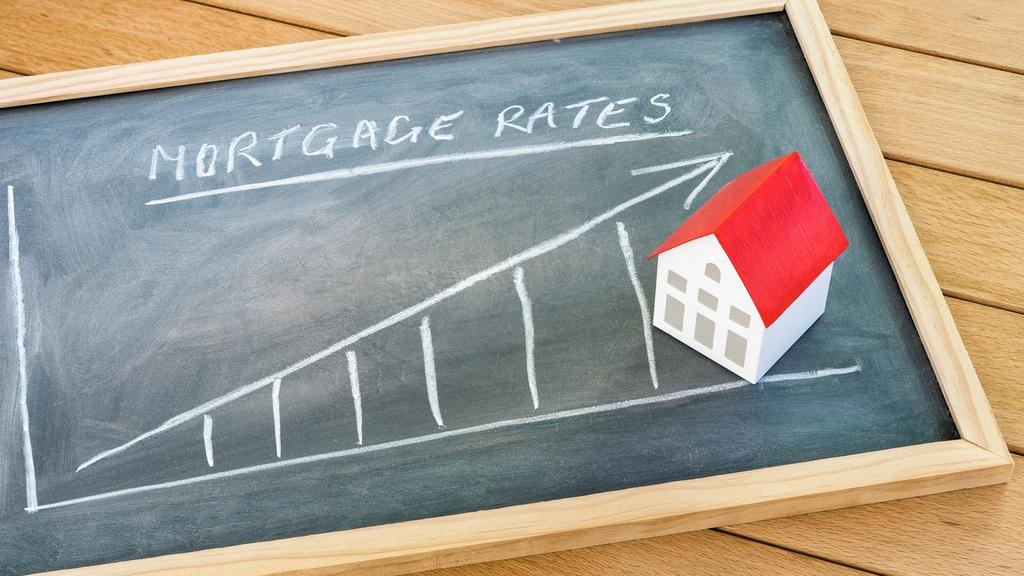Nathan Mawby| Real Estate| 19 September 2022
How all the bloomin’ rate rises are affecting the spring market and you – realestate.com.au
Interest rate hikes have piled on hundreds of dollars of hip-pocket pain for anyone with a mortgage and reshaped the property market this year.
After five rate hikes in as many months, a typical $500,000 mortgage with a variable rate now costs an extra $500 a month.
As we head into the year’s busiest market experts have revealed how this is affecting buyers and sellers, as well as which loan types and features could help beat the bank this spring.
MARKET PAIN POINTS
Mortgage Choice broker David Thurmond said first-home buyers were worst off, after a six-figure hit to their borrowing capacity this year.
“Someone who could afford to borrow $700,000 in May is looking at $500,000 now,” Mr Thurmond said.
“And there’s not a whole lot you can do to beat higher interest rates, other than go out and earn more money. Some lucky people might be able to get more of a gift from mum and dad, otherwise it’s a matter of buying something more affordable.”

There’s only so much you can do to scale a rising mortgage rate cliff.
But with rates tipped to rise to 5 per cent by the end of the year, and already starting to hurt some owners, he warned forced sales were on the way for some overstretched owners.
“We are having difficult conversations with people who have taken out loans when rates were at their lowest and telling them not to put their head in the sand,” he said.
For these reluctant sellers, a lower rate, a loan holiday or even swapping to an interest-only loan could “buy you time to do it right”.
But he noted the first step should be to speak with a loan broker, with about 15 lenders today offering $2000-$6000 in cash back for switching — no strings attached. For those struggling to meet repayments today or worried about the future, this could be enough to avoid the “oh no moment” of a forced sale.
OPPORTUNITY COST
Your Property Success mortgage broker and property investment guru Jane Slack-Smith said while dire for some, rising rates had ironically made it a good time to buy.
“There is pain, but if you have the opportunity and the buffer I’m definitely seeing people who are being the contrarian investor,” Ms Slack-Smith said.

If your numbers stack up, buying in a rising interest rate market can save you big bucks.
The environment also means sellers are generally quite committed to getting a deal done. And it’s not just sellers who are ready to do a deal.
“The banks’ people who deal with brokers are telling us there’s more they can do to get better pricing than is on their website,” she said.
Ms Slack-Smith noted banks were more generous for larger loans, which puts upsizers in the box seat, but the best deals might involve leaving their current lender. “You probably will find there are more aggressive rates from other lenders,” she said. “And there might be a bigger discount for a higher loan.”
A former explosives engineer, Ms Slack-Smith aims to de-risk property investment, and warned those thinking of buying to consider their position before bargain hunting.
“Just because you could pick up a property now $30,000 cheaper than in a year’s time, if you don’t have the funds or the buffer, don’t do it,” Ms Slack-Smith said. “The best way to de-risk is not to take a risk.”
RATING THE LOANS
Variable rate home loans rise and fall with the Reserve Bank of Australia’s monthly cash-rate call, but typically have the lowest interest rate available with a bank, with no extra fees or costs if you want to pay more of your mortgage off.
Mr Thurmond said the only drawback was the unknown of exactly how high rates might rise in this cycle. But with finance experts already hinting rates could fall next year, he said most of his clients were taking a variable rate.
At present, about 40 per cent of Australians have a fixed-rate loan (or partially fixed), according to Mr Thurmond.

Locking in a fixed rate this spring could also lock you out of cheaper rates next year.
These borrowers know exactly what their monthly repayment will be until the end of their fixed term (typically, one, two or three years). But many will be facing a snap rise in repayments when their fixed term ends in the next 12-18 months.
Given banks set these rates higher than their variable rate, borrowers seeking a fixed rate will have less borrowing power. Worse, Mr Thurmond noted they were also at higher risk of facing “break costs” — potentially $20,000-$30,000 in fees that apply if you want to swap to a more affordable variable rate if rates fall, but also if you sell your home before the end of the agreed term.
Fixed-rate loans also cap how much extra you can pay towards your mortgage in a year, usually at $10,000, so it’s harder to reduce your loan’s principal (the initial amount you borrowed from your bank).
TRICKS AND TRAPS
The last loan you might consider is an interest-only loan.
Mr Thurmond warned owner occupiers off of these, as at the end of the interest-only period you would not have made a dent in your principal debt and would wind up paying more in the following years to catch that up within the original terms of your home loan.
He did note it could be a “liferaft” for those in a dire situation, and might buy time to prepare for a sale.
However, Ms Slack-Smith said interest-only loans were well-suited for investors looking to minimise their holding costs while they waited for capital growth.
Those already using one of these loans could be facing near-future pain if the interest-only term was due to expire soon. Those who could not refinance to another interest-only term, or meet the extra payments, were likely to be forced to sell, she warned.

Even investors paying cut rate interest-only loans need to be calculating future payment costs.
Both redraw facilities and offset accounts could help borrowers, as they effectively allow savings to be counted against your mortgage’s principal – lowering the amount of interest you pay.
The key difference is that the offset account is a transactional account and you can spend from it, typically for an $800-$1500 annual fee depending on the size of your mortgage. Mr Thurmond said for most borrowers, it was necessary to keep $30,000-$50,000 in an offset account to offset the fees.
A redraw facility meanwhile has no extra cost, though money has to be transferred out of it to be spent.
“I look at the redraw as the preferred option as it’s more out of sight and out of mind – you won’t see it at the ATM,” Mr Thurmond said. “So it will stop you buying that new TV on an impulse.”

Recent Comments